Botswana "Glamping" Safari - Northern Highlights
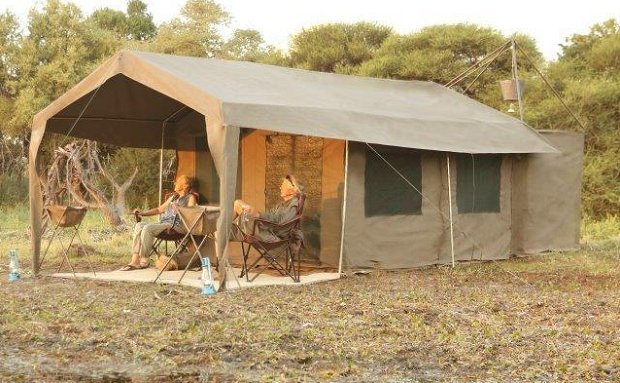
Moremi Game Reserve, Khwai Conservancy and Savuti - Chobe National Park
Gallery
Itinerary
Day 1 - 4
Letaka Safaris Mobile Camp - Moremi Game ReserveLetaka Safaris Mobile Camp is situated within the Moremi Game Reserve. We, generally, use the Xakanaxa and Third Bridge areas of Moremi Game Reserve.
Your camp chef, camp hand and waiter shall be available at all times to look after your every need, from setting up and breaking down camp, to cooking, cleaning and table service.
Each tent has its own en-suite bathroom, with toilet and open-air bucket shower, order your water, hot, medium or cold for those hot afternoons.
Sleep on solid-based beds in your twin, single or family configured tents.
Your camp chef will cook all meals, snacks and desserts, in camp, and on a fire - no gas involved - a pretty impressive sight to behold and experience. Your waiter shall be on hand to pass you a refreshing beverage whilst you watch the exciting 'bush television,' the campfire, and simply be present in every moment long into the night.
Moremi Game Reserve
After your arrival at Maun International Airport, you will be met by Mack Air for your charter flight at approximately 14h00 to the Xakanaxa airstrip in Moremi Game Reserve where you will be met by your guide.
Our first three nights are spent in the Xakanaxa region where we explore the surrounding wilderness on morning and afternoon game drive excursions.
Wildlife: From the air only the larger animals are easily seen. These include large breeding herds of African elephant that live in the mopane scrub. On the open plains large herds of buffalo and lechwe can be seen and in the waterways, pods of hippopotamus are a common sight. Once you land in Xakanaxa and board your land cruiser, the smaller game animals can be found.
Birding: A good day for raptors with African Hawk-Eagle, Gabar Goshawk, Shikra, Little Sparrowhawk, Dark Chanting Goshawk, Tawny Eagle, Lesser Spotted Eagle* and Steppe Eagle* all inhabiting the mopane and adjacent woodlands. Other birds common along this route includes most of Botswana’s hornbills including Red-billed, Southern Yellow-billed, African Grey, Bradfield’s and the Southern Ground Hornbills. A large number of brood-parasites may also be seen. Diederick Cuckoo*, Levaillant’s Cuckoo*, Jacobin Cuckoo*, Great-spotted Cuckoo*, African Cuckoo*, Common Cuckoo*, Shaft-tailed Whydah, Pintailed Whydah, Eastern Paradise Whydah, Greater Honeyguide, and Lesser Honeyguide.
Day 4 - 7
Letaka Safaris Mobile Camp - Khwai ConcessionLetaka Safaris Mobile Camping is situated in Khwai. Your camp chef, camp hand and waiter shall be available at all times to look after your every need, from setting up and breaking down camp, to cooking, cleaning and table service.
Each tent has it's own en-suite bathroom, with toilet and open-air bucket shower, order your water, hot, medium or cold for those hot afternoons. Sleep on solid-based beds in your twin, single or family configured tents.
Your camp chef will cook all meals, snacks and desserts, in camp, and on a fire - no gas involved - a pretty impressive sight to behold and experience. Your waiter shall be on hand to pass you a refreshing beverage whilst you watch the unscripted 'bush television,' the campfire, before and after dinner.
The Khwai Concession
The Khwai River forms a boundary between the reserve and the community area. We spend the following two nights camping at an exclusive campsite in the community area, exploring the Khwai floodplains on game drives both during the day and at night. Exploring after dark with spotlights offers you an opportunity to experience some of the nocturnal animals that are rarely encountered during the day.
We will also have the opportunity to explore the surrounding wilderness on foot (please note that this activity is seasonal based on rains and grass height, your guide will determine the safety of walking in Khwai) and mokoro and enjoy an up close and personal encounter with Botswana’s flora and fauna.
*It is important to note that night drives and guided walks are not permitted within the national parks and reserves. These activities are conducted outside the boundaries of the Moremi Game Reserve in the Khwai community area.
Habitat: We spend our time between the dry-land habitats of the lead-wood and camel-thorn woodlands and savannahs and the riverside and marshy back-waters of the Khwai. Time permitting we may visit the lagoons and waterways of Xakanaxa where the largest heronry in southern Africa exists.
Wildlife: The Khwai region boasts excellent populations of both bull elephant as well as breeding herds. Lion, leopard, serval and African wildcat are common predators of the region with wild dog and cheetah being less common. Buffalo use this area seasonally with large herds moving in during the summer rains. The swampy areas in the west are home to red lechwe. Other ungulates include tsesebe, blue wildebeest, giraffe, kudu, sable antelope, roan antelope and impala.
Birding: Truly one of Botswana birding Mecca’s. The western reaches are prime habitat for the uncommon Rosythroated Longclaw. The entire length of the river is hunting domain for the Bat-Hawk. Other interesting raptors here are Cuckoo Hawk (rare), Long-crested Eagle and Black Sparrowhawk. More commonly Tawny Eagle, Steppe Eagle*, Lesser-spotted Eagle*, Martial Eagle, Bateleur and African Hawk-Eagle. The waterways host Africa Rail, African Crake*, Greater Painted Snipe, Allen’s Gallinule*, Lesser Jacana and Lesser Moorhen*.
Day 7 - 10
Letaka Safaris Mobile Camp - Savuti, Chobe National ParkLetaka Safaris Mobile Camp - Savuti in Chobe National Park
Your camp chef, camp hand and waiter shall be available at all times to look after your every need, from setting up and breaking down camp, to cooking, cleaning and table service.
Each tent has its own en-suite bathroom, with toilet and open-air bucket shower, order your water, hot, medium or cold for those hot afternoons.
Sleep on solid-based beds in your twin, single or family configured tents.
Your camp chef is will cook all meals, snacks and desserts, in camp, and on a fire, no gas involved. A pretty impressive sight to behold and experience. Your waiter shall be on hand to pass you a refreshing beverage whilst you watch the excited bush television, the campfire, before and after dinner.
Savuti in Chobe National Park
We head further north en-route to Central Chobe region, exploring the desert-like landscape on game drives.
Habitat: A fascinating days drive looking at some of the evidence of the Paleo-Lake Makgadikgadi that dried up some ten thousand years ago. The most challenging part of the trip is crossing the Magwikwe Sand-ridge that formed the shoreline for this massive inland sea. The winding track through this deep sand makes for interesting travel in the early summer! The old lake bed is now the Mababe Depression. The dense clay floor of the depression result in high protein feed for wildlife and the area teams with game after the rains. During the rainy season the depression is impassable due to the “cotton soil” and alternative routes must be used.
Wildlife: A day when anything could happen. The range of habitat that is covered encompasses most of the habitat types of northern Botswana. We pass through excellent lion country and some of the best cheetah country that our safari will cover. Elephant occur throughout the drive but are more common at the start and end of the drive where permanent surface water can be found.
Birding: The Mababe Depression is a birder’s paradise. The nutritious grasses that grow on the rich soils provide excellent seed for an impressive array of estrillids and viduids. Among these are the magnificently coloured Violet-eared Waxbill, Black-cheeked Waxbill, Village Indigobird, Shaft-tailed Whydah and Paradise Whydah. These in turn provide a good food source for small raptors such as the Little Sparrowhawk, Shikra, Gabar Goshawk, Red-necked Falcon and Lanner Falcon. It is not only the small birds that feed on the grass seeds, but rodents too. There are annual outbreaks of huge numbers of rats and mice. As a result, huge numbers of Secretary Bird, Tawny Eagle, Black-shouldered Kite, Steppe Eagle*, Lesser-spotted Eagle*, Wahlberg’s Eagle* and Steppe Buzzard* can be found.
Day 10
End of ItineraryOn our final day on safari, we will leave Central Chobe early to travel along the Chobe River arriving in Kasane where we will stop for a picnic lunch before taking an afternoon boat cruise to end the safari. As today is a long day we recommend either spending a night or two in Kasane at Chobe Safari Lodge or two nights in Livingstone at Taita Falcon Lodge or Victoria Falls at Ilala.
For those transferring to lodges in Kasane or across to Zambia/Zimbabwe it is recommended that your transfer be organized to meet you at Kalahari Tours at 15h30.
Habitat: The habitat on today’s drive takes us through the stunted mopane scrub of the Goha clay basin, across the sand-ridge and through the wonderful Zambezi teak woodlands of the Chobe Forest Reserve and along the Chobe River itself. The Chobe floodplain is tens of kilometers wide and in years of exceptional rains the water stretches as far as the eye can see.
Wildlife: While there are community areas that we pass through that are settled by local tribes, for the vast majority of the day’s drive we pass through wild country where wildlife moves un-inhibited by fences or man. Roan and sable antelope thrive in the teak woodlands where the low density of predators and lack of competition for food by other ungulates makes this prime habitat for these large ungulates. Leopard occur in these woodlands in low numbers but they are highly secretive and seldom seen. The Goha region has natural waterholes that hold water well into the dry season and herds of buffalo, Burchell’s zebra, greater kudu and elephant come down to drink.
Birding: The most unusual species are to be found in the teak (Baikea plurijuga) woodlands. This broad-leafed woodland, or miombo as it is locally known, provides good pickings for insectivorous birds that favour canopy habitat. Grey Tit-Flycatcher, Ashy Flycatcher, Paradise Flycatcher, Pallid Flycatcher, Scarlet-chested Sunbird, Amethyst Sunbird, Yellow-throated Petronia, Red-headed Weaver and Violet-backed Starling are only some of the species that move around in the “bird parties” in the canopy. Dickenson’s Kestrel, Red-necked Falcon, Peregrine Falcon* and Lizard Buzzard are some of the raptors to keep an eye out for, while the diminutive White-faced Owl can often be seen roosting in the road-side vegetation. Flappet Lark, Fawn-coloured Lark, Dusky Lark*, Olive-Tree Warbler* and Neddicky are species more likely to be enjoyed by the birding enthusiast.
Rates
Included
- Transfers from Maun International airport (MUB)
- Tented accommodation, sharing with partner/companion
- Meals and drinks whilst on safari
- Transfer to Kasane International airport (BBK)


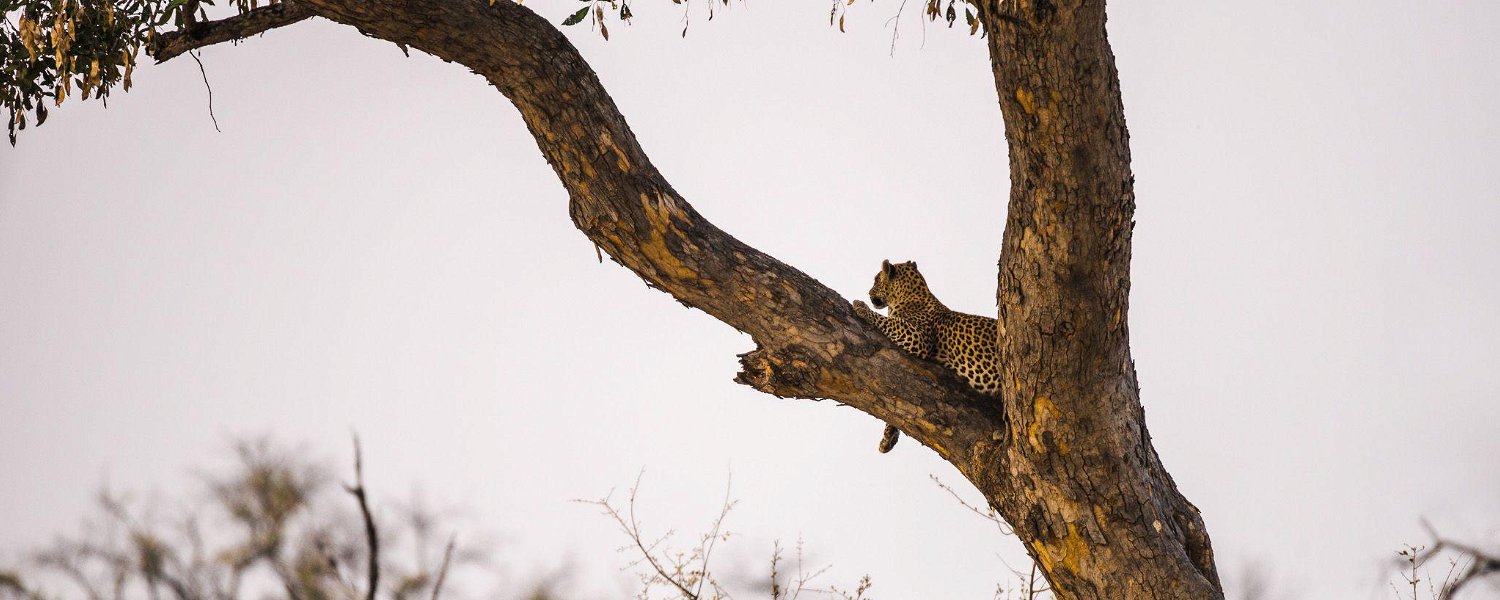




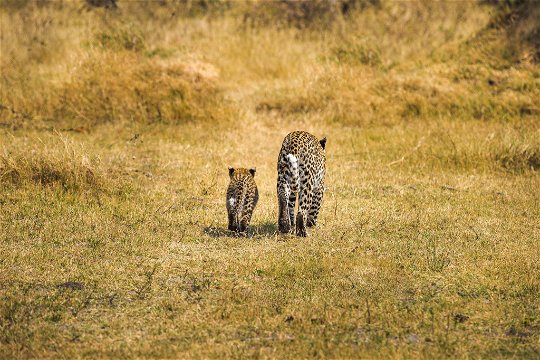

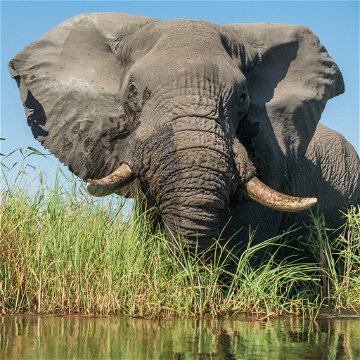

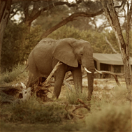
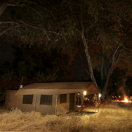
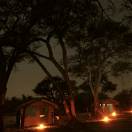

Share This Page